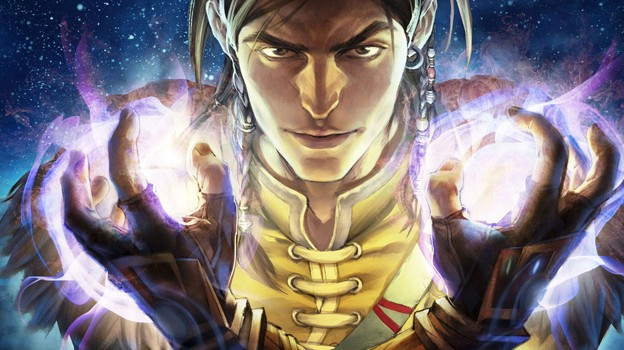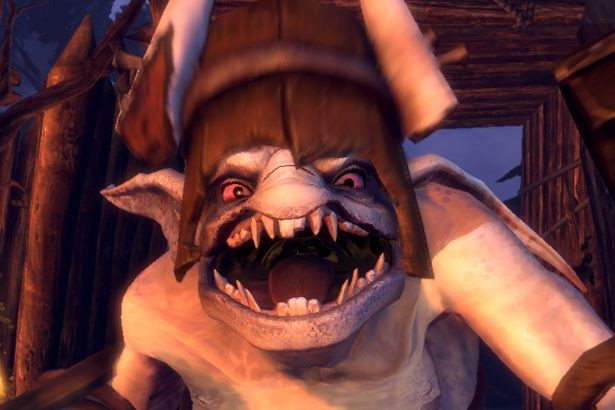Fable: The Journey - Review
A cautionary Fable

Key Features
- Developer: Lionhead Studios
- Publisher: Microsoft
- Platforms: Xbox 360
- Release date: 12 October
- Price: £39.99
Fable: The Journey Review
To begin with, Fable: The Journey is extremely pleasant. Playing as Gabriel, a young Albion tribesman with a voice like Brian Cox, your first job is simply to clean your horse. And for a while, everything fits; given basic tasks like these, the Kinect feels like the perfect relaxation tool, giving your hands a few fluid motions to go through while brush your horse down, and listen to the chirpy, northern-accented patter between Gabriel and his uncle. The whole tutorial feels like pony-trekking in Devon. Trotting along at a gentle pace, swapping stories with your pal; there's not a lot for you to do with the Kinect, but it still feels tactile. Compared to the high-octane opening levels of a lot of computer games, Fable: The Journey's first section is a welcome retreat.
But things go quickly and severely downhill from there. Usual Kinect issues aside, Fable: The Journey is gigantic hardware error from start to finish. Even perfectly calibrated, the Kinect feels wrong.
Muck about
Albion, as we and the other Fable games know it, is a sprawling, endless sandbox world replete with opportunities to explore and muck about. In Fable: The Journey, it's a long straight road, funnelling players from one action beat to the next. Hopelessly limited by the Kinect's motion-sensitive functionality, which only allows for players to grab, throw and rub things, Lionhead has been forced to boil their Fable series down to its core, and beyond. The closest thing the game has to a sandbox world are small, contained hitching posts, where you wander around for a few minutes feeding your horse and picking apples. There are optional paths to take, too, off the beaten track, but these rarely amount to anything except a brief Kinect brawl with some critters and a quick bit of loot. The true sense of wandering, which gave former Fable games their substance, is missing from The Journey.

A lot of the time, it feels like a lightgun shooter; railroaded from one battle to the next, most of Fable: The Journey is spent shooting bad guys with your magic. But thanks to its neat combination of offensive and defensive moves, combat is The Journey's strongest point and action scenes can generally be relied on for fun. Attacks come in two flavours: There's your Bolt spell, which is fired by jabbing at the Kinect, and Push, a telepathic shunt activated by holding your left arm up, then straightening it out towards your opponent. Moves can be countered, too; crossing your arms over your chest like a shield blocks enemy attacks. Get the rhythm and the motions right, and fighting in The Journey becomes remarkably satisfying, as you string together combos of Bolt and Push, and quickly parry incoming projectiles. Scenarios vary from zapping enemies from inside a runaway mine cart to enormous boss battles, that require you to physically lean out of the way of incoming attacks. One level sees you caught upside down in a bear trap, flipping the Kinect controls to leave you flailing to defend yourself from encroaching Balverines. It's exciting stuff, a welcome change to standard, lightweight Kinect fare.
Thin, straightforward and dull
But it's not a Fable game, at all. Balverines aren't the only connections to Albion lore - series staple Theresa returns in a supporting role, and there are several mentions of other Fable characters - but these connections are tenuous, and in fact servce only to highlight how far removed The Journey is from the rest of the series. As a marketing ploy, the Fable brand has worked against Lionhead this time: Though understandably eager to capitalise on the franchise's success, Lionhead has scuppered The Journey by placing it alongside other Fable games. Next to Fables 1, 2 and 3, The Journey feels thin, straightforward and dull; perhaps as a new IP, The Journey would have stood a better chance

But, despite Lionhead's patronising assurances that no, really, it's for 'core gamers' too, Fable: The Journey is utterly insubstantial. It almost makes up for it with style (even when you're racing by it on your horse and cart, Albion is very pretty) but Fable: The Journey has a little to offer serious game fans. As a matter of fact, it might even struggle to win over Kinect users; at fifteen plus hours long, and with plenty of cutscenes, The Journey is likely to put off anyone who plays games casually. As such, it's an army without a country, a game without a market; as Lionhead's first experiment with the Kinect, Fable: The Journey is a total failure.
Scores:
- Gameplay - 6/10: The Kinect ruins Fable: The Journey, stripping out the series' trademark sandbox fun. Combat is still solid
- Sound - 6/10: A bland score is helped along by wonderful voice acting
- Graphics - 7/10: Albion is still gorgeous, but you won't have time to see much of it
- Replay value - 4/10: Fable: The Journey is a dull game. You will struggle to finish it once
- Overall - 5/10: A lifeless cash-in that feels forced out. Nothing here for Fable or Kinect fans
© Copyright IBTimes 2025. All rights reserved.





















